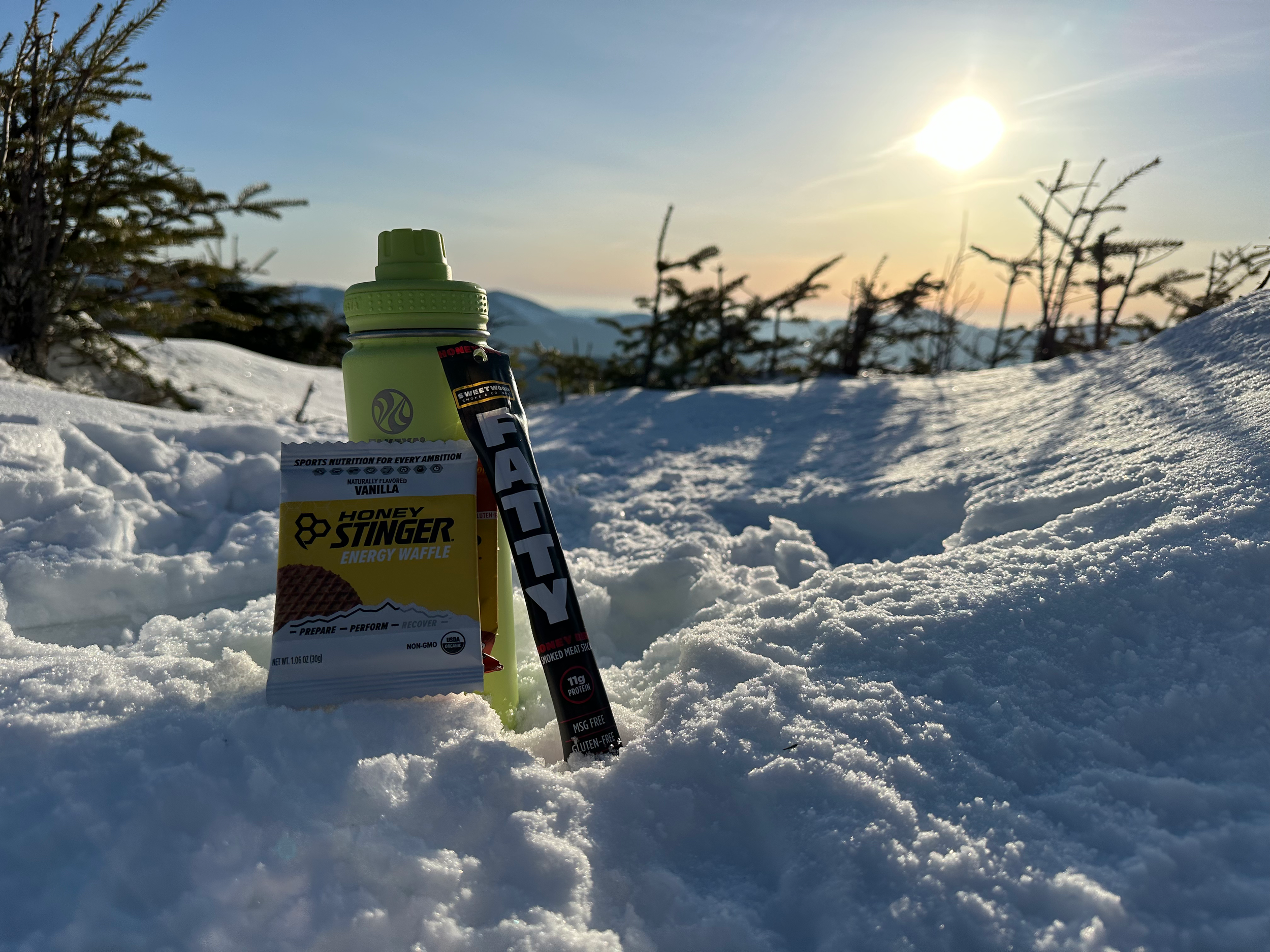How to Pick the Best Hiking Snacks to Fuel Your Body for Adventure
Some good hiking snacks to bring on a hike.
Hiking is an activity that requires a lot of mental fortitude and physical effort. Typically, a hiker will burn hundreds of calories per mile—varying per person—meaning they’ll need plenty of food to refuel and maintain energy throughout the hike. Without proper nutrition, an enjoyable hike can quickly turn into an exhausting one. That is why picking out the right snacks for hiking is important.
If you’ve ever felt like you’re hitting a wall while going uphill, then you may not be fueling your body right. To help you pack the best snacks for hiking, I spoke to Tyler Morgan, a health and fitness expert, and avid hiker.
Tyler Morgan is an experienced personal trainer with a degree in kinesiology and over 10 years of experience studying nutrition for performance.
Carbohydrates for Consistent Energy
Maintain Energy With Mangos
Freeze-dried mangos are a great quick-digesting carbohydrate to consume during a hike.
Good hiking snacks will have a blend of quick-digesting and slow-digesting carbohydrates, which drive energy into your body and enable your legs to keep moving at the pace that they’re going on a hike. Morgan says that, “carbohydrates are your body’s main energy source.”
Quick-digesting carbohydrates, such as sugars, are used quicker than slow-digesting carbohydrates. They can be found in snacks like Honey Stinger waffles, Nutri-Grain bars, and fruits, such as apples and bananas. With this type of carbohydrate, your body can rapidly absorb, digest, and transfer this macronutrient into adenosine triphosphate (ADP), which is the body’s primary energy source.
Slow-digesting carbohydrates move slower through the digestive tract. This type of carbohydrate turns into glucose, which is the energy fuel within your muscle cells. Both quick- and slow-digesting carbohydrates play an important role in providing your body with energy during a hike.
“It’s kind of like a time-release of carbohydrates,” says Morgan.
For the hike up, pick hiking snacks that are low in protein and fats since this allows the carbohydrates to digest and be used by your body quicker. To ensure your body doesn’t run out of glycogen on the hike up, Morgan recommends eating a snack somewhere between 15 to 30 grams of carbohydrates every 1 to 2 hours. Doing this will keep your body fueled just enough where you aren’t too hungry or uncomfortably full.
Morgan notes that nutrition is very individualistic, meaning there is no one-size-fits-all when it comes to how much and what to eat, especially while fueling for a hike. The above recommendations are a general rule of thumb that hikers can follow, but should base their consumption on how their body feels.
Good Hiking Snacks for Proper Digestion
Small Snacks, More Frequently
Find foods that work for you and fuel your body.
Before going on a hike, eat the snacks you intend to bring on the hike before a morning walk or workout session to see how your body digests it. You can also pick snacks that you already know your body digests well.
“You don’t want to find out [that you don’t digest something well] in the middle of the trail,” says Morgan.
If you’re familiar with the Presidential Traverse in the White Mountains, then you know that this 20-mile hike with over 8,000 feet of elevation gain requires a lot of energy and exertion to complete. Once hikers get to Mount Washington, they can head into the Sherman Adams Visitor Center during the on-season for a filling meal. Although many go for the pizza, what they may not realize is that it takes hours to break down a big meal, digest it, and for your body to drive energy from it.
“If you were to interview any marathon runner or ultra runner, they’re not eating pizza in the middle on their races.” says Morgan.
If you plan to eat a large meal, then make sure you have an hour or so to digest so you can continue hiking comfortably. Otherwise, “you’re not going to feel good and you’re not going to be able to move well if your stomach is unsettling and trying to digest and break down huge meals,” says Morgan.
Instead of having a huge meal during the hike, try eating a meal with carbohydrates and protein the night before your hike, such as pasta and meatballs or chicken and rice. If you have a couple of hours to digest the morning of your hike, then you can also have a filling meal then, such as oatmeal with yogurt, an egg sandwich, or a protein muffin.
The Best Hiking Snacks for the Summit
Summit Snacks
Fuel your body with carbohydrates on the way up, and then proteins and fats at the summit.
“When you get to the summit, or midway through, or when you’re taking a break, that’s when you can have a more higher-calorie meal,” says Morgan. While you should be prioritizing carbohydrates on the hike up, the summit is where you should replace the calories you’re burning by getting in some fats and protein.
“Typically, your body uses muscle tissue as an energy source, not body fat when you’re doing endurance activities,” says Morgan. That is why consuming protein at the summit to combat your body breaking down muscle tissue is important. Some good hiking snacks for the summit would be things like beef jerky, hard boiled eggs, trail mix, and protein bars.
Let your summit snacks digest for 10 to 15 minutes before heading down or continuing onward to another peak. If you feel your energy decrease, try consuming a gel packet or another snack that has quick-digesting carbohydrates, such as apple cider.
Drinks & Hydration
Apple Cider
Fructose is a natural sugar that will provide your body with quick energy.
While many hikers like to bring hot drinks, such as coffee and hot chocolate, in the winter, they aren’t going to help much when it comes to energy. Fruit juices, such as apple cider, is an easy way to get in quick-digesting carbohydrates while simultaneously staying warm. In addition, Morgan suggests packing salt tabs since hikers sweat out a lot of sodium, which can lead to cramping and muscle fatigue.
“You may feel like you don’t need as much [sodium] in the winter, but your muscles and body still require the proper amounts,” says Morgan. The night before a hike, hikers should add extra salt to their food and hydrate well. Over-hydrating isn’t good either since it will flush out your system.
While descending the trail, hikers are often eager to get back to their cars and head out for a nice meal and beverage. Regardless of their health and fitness goals, post-hike meals are when you can be more lenient with what you consume. Focus on getting in a meal with protein, fats, and carbohydrates, such as a cheeseburger with fries, to replace calories lost and to end your day feeling good, fueled, and as happy as can be.





